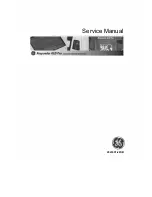
MFJ-836H SWR/Wattmeter and RF Ammeter
Instruction Manual
1
MFJ-836H SWR/Wattmeter and RF Ammeter
Introduction
The MFJ-836H is an all-in-one true peak reading SWR/Wattmeter with a built in RF
Ammeter designed to operate on 1.8-30 MHz. The SWR/Wattmeter uses our
TrueActive
peak reading circuit to read true peak/average forward and reflected power
and SWR simultaneously. It has 3000/300 Watts forward and 600/60 Watts reflected
power scales. The SWR/Wattmeter utilizes a large illuminated three-inch Cross-Needle
meter to read the SWR from 1:1 to
∞
. The RF Ammeter measures RF feedline current in
three calibrated ranges: 3 Amperes, 10 Amperes, and 30 Amperes.
Installation
1.
Connect your transmitter to the connector on the back of the unit labeled
TRANSMITTER and your antenna to the connector labeled ANTENNA. It is
important that you use good quality coax and properly installed connectors.
2.
The MFJ-836H has a
TrueActive
peak reading circuit included the
SWR/Wattmeter that requires a DC power supply such as the MFJ-1312B in order
to function. A 9 VDC may also be installed inside the meter with a battery clip
that is included. The rear panel accepts a 2.1 mm coaxial plug with the center
conductor positive (+) and the sleeve negative (-). The negative lead is grounded
inside the meter. There is no need to disconnect the battery when using external
power. The RF Ammeter does not require power to operate.
3.
An internal lamp backlights the SWR/Wattmeter scale. The lamp circuit requires
12 VDC and will not illuminate with the 9 VDC battery alone.
4.
To measure the power output capability of a transmitter/amplifier you should
connect a quality 50-ohm dummy load to the ANTENNA connector of the MFJ-
836H.
NOTE:
The SWR/Wattmeter must have a power source in order to function. A nine-
volt battery may be installed in the compartment on the rear panel, or an
external 12 VDC source, such as the optional MFJ-1312D power supply, may
be used.
IMPORTANT:
Please read entire manual before attempting to operate this equipment. This
unit does not provide a dc or low frequency earth ground. A separate wire
should be connected from the station ground bus to an electric ground. Do
not place any non-coaxial feed wires near metallic or RF sensitive devices.


























